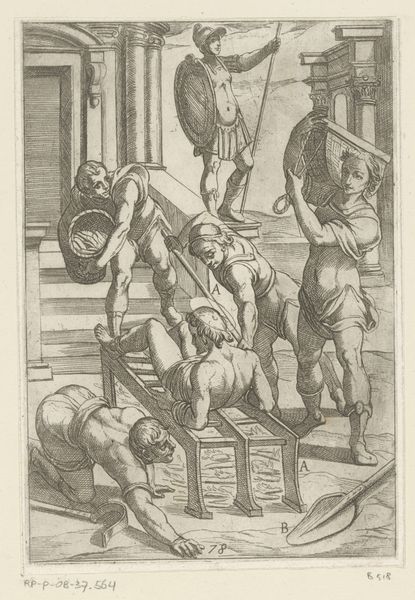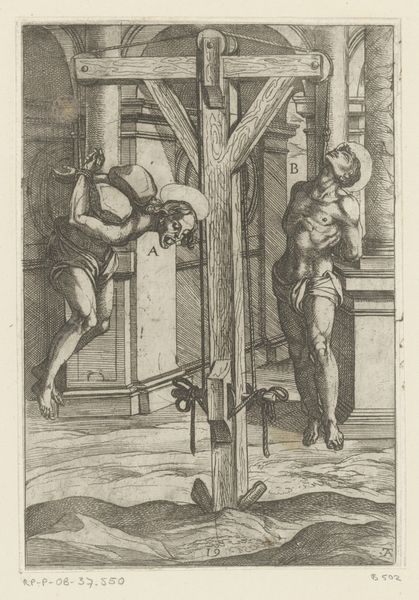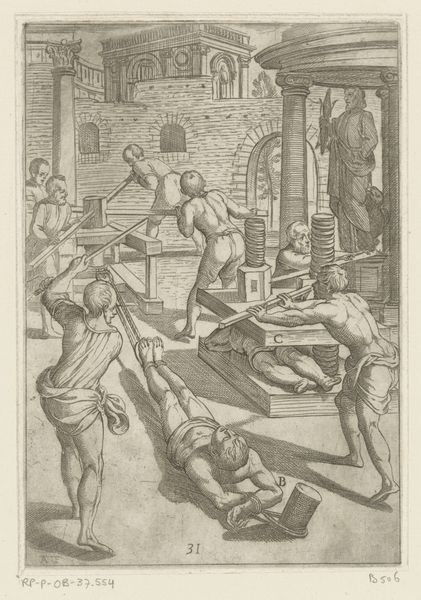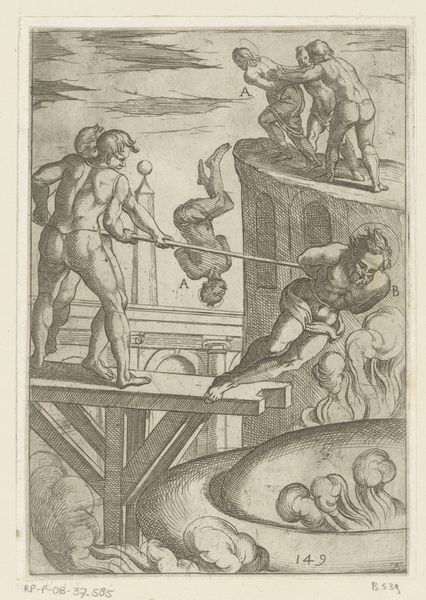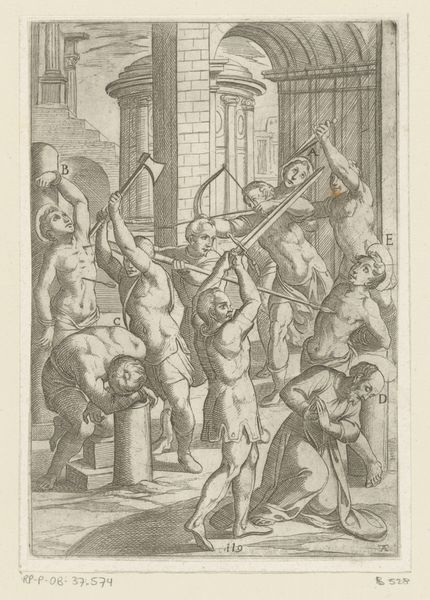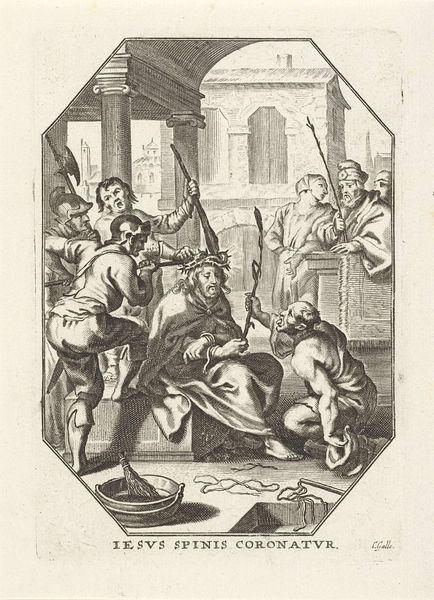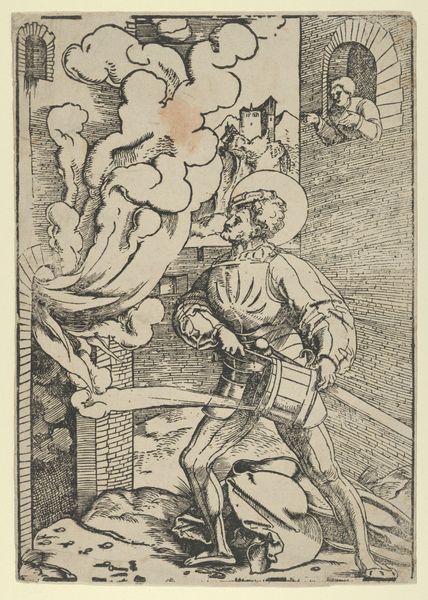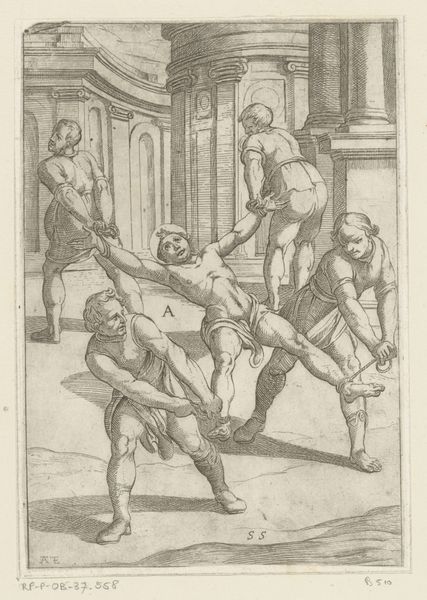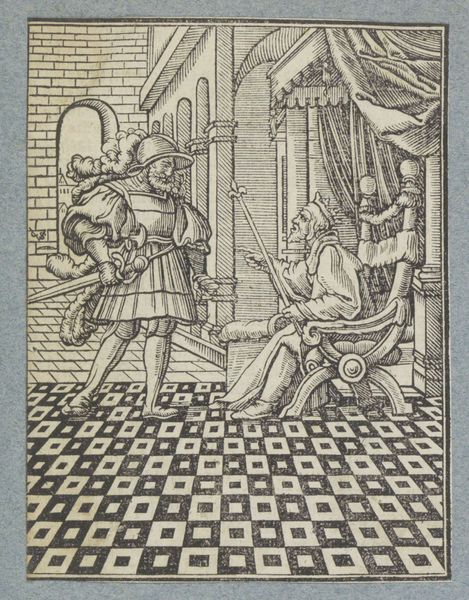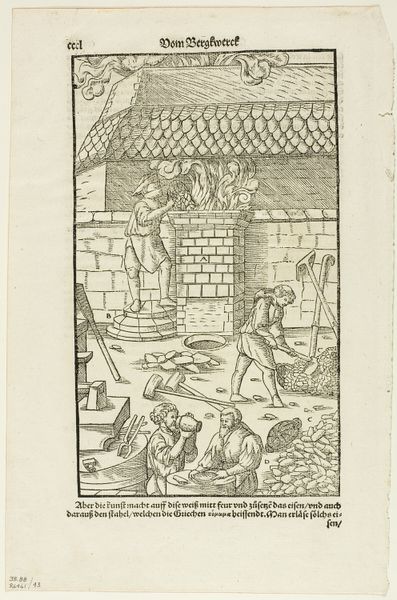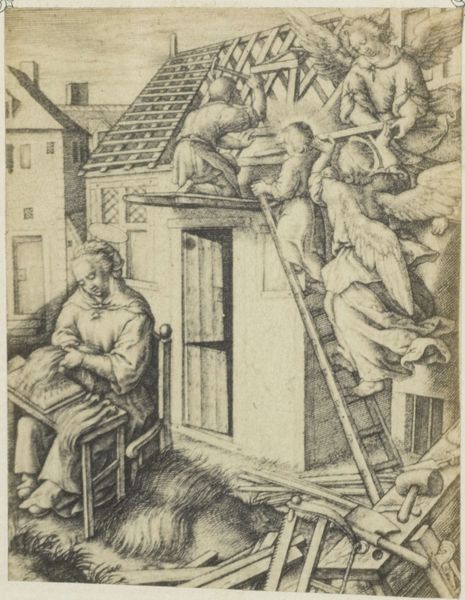
print, metal, engraving
#
narrative-art
#
baroque
# print
#
metal
#
pen illustration
#
old engraving style
#
figuration
#
form
#
line
#
history-painting
#
engraving
Dimensions: height 194 mm, width 133 mm
Copyright: Rijks Museum: Open Domain
Editor: Here we have "Foltering: het laten vallen op scherpe punten," or "Torture: Dropping onto Sharp Points," an engraving by Antonio Tempesta from around 1565-1630. It's quite stark and unsettling, of course, the image of this man being dropped onto spikes. What kind of historical or symbolic weight do you think an image like this carries? Curator: It's a potent and deliberately disturbing image. Consider the context: these depictions of torture weren’t simply records of brutality. They were also warnings, visual symbols meant to inspire fear and maintain order. How does the architectural setting – the classical ruins juxtaposed with the brutal efficiency of the torture device – strike you? Editor: I notice that contrast! It seems to suggest that even the great civilisations are capable of terrible things. Is that a common theme in Baroque art? Curator: Absolutely. Baroque art often grapples with contrasts – light and shadow, beauty and decay, the spiritual and the corporeal. This juxtaposition, the crumbling grandeur of Rome as a backdrop to the spikes, speaks to the precariousness of power, the transience of earthly achievements and perhaps humanity’s continued barbarity. Look at the executioner. Does his stance betray enjoyment or reluctant duty? Editor: He looks determined, but the engraving is so detailed, it’s hard to read his emotions. I hadn't considered that the way someone is tortured can be a statement itself. It's a brutal form of communication. Curator: Precisely. And one that leaves indelible marks, both physical and cultural. How does that understanding of visual rhetoric affect your reading of contemporary images of violence? Editor: It makes me think about how easily images can be used to desensitize or incite, and about how long those messages can linger in our collective memory. Curator: Indeed. The image resonates with contemporary implications of our capacity for inflicting suffering on others for different reasons, proving true to its intentions centuries later.
Comments
No comments
Be the first to comment and join the conversation on the ultimate creative platform.
